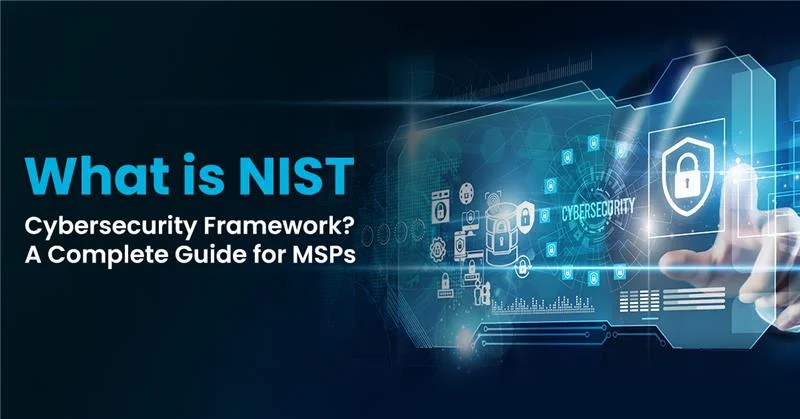Your client’s server crashes at 2 AM. Every minute it stays down costs them money and damages your reputation. How quickly you resolve that incident? That’s your MTTR, and it’s the difference between MSPs who keep clients and those who lose them. This is exactly why effective NOC services for MSP operations have become non-negotiable for competitive service delivery.
Mean Time to Resolution isn’t just another acronym to track. It’s your operational report card, your competitive edge, and the metric clients scrutinize when deciding whether to renew your contract.
What is MTTR? Understanding Mean Time to Resolution
MTTR is the average time from when an incident is detected until it’s completely resolved. Not just patched, not just “working for now” fully resolved.
Define MTTR: The Core Incident Management Metric
The MTTR meaning extends beyond a simple timer. It captures your entire incident response lifecycle: detection, diagnosis, repair, and verification. Every second counts.
Unlike mean time to repair (which focuses purely on the physical fix), MTTR encompasses the complete resolution process. This makes it one of the most critical ITIL metrics for incident management that MSPs track.
According to the 2024 Observability Pulse survey of over 500 IT professionals, almost 23% of organizations are making great strides in reducing their MTTR, while 41% report making slow progress. The gap between leaders and laggards is widening.
MTTR vs. Mean Time to Repair: Know the Difference
People often confuse these terms, but they measure different things:
- Mean time to repair: Only tracks the actual repair duration
- Mean Time to Resolution: Includes detection time, diagnosis, repair, and verification
Why does this distinction matter? Because you can have a fast repair time but still have terrible MTTR if your monitoring is slow or your diagnosis takes forever. Understanding both metrics gives you the complete picture of your NOC efficiency.
How to Calculate MTTR: The MTTR Formula Explained
The math is straightforward. The insights? That’s where it gets interesting.
The MTTR Calculation Process
The MTTR formula is simple:
MTTR = Total Resolution Time ÷ Number of Incidents
Here’s a practical example: You had 4 incidents over 3 weeks totaling 12 hours of resolution time. Your MTTR is 3 hours (12 hours ÷ 4 incidents).
What counts as “resolution time”? It includes:
- Time from initial alert or detection
- Diagnosis and troubleshooting duration
- Actual repair implementation
- Testing and verification that the fix works
Common MTTR Calculation Mistakes
Your MTTR is only as accurate as your data. Watch out for these errors:
- Selective ticketing: Not logging quick fixes skews your average artificially
- Manual time tracking: Technicians forget to start or stop timers
- Excluding detection time: This masks monitoring deficiencies
Automated ticketing systems eliminate these problems and give you real numbers you can actually use to improve.
Why MTTR Matters for MSP Operations
Let’s talk about the real business impact of your mean time to repair MTTR.
How Mean Time to Repair MTTR Impacts Your Bottom Line
According to ITIC’s 2024 survey, over 90% of mid-size and large enterprises estimate their hourly downtime cost exceeds $300,000. Even for SMBs, downtime costs between $127 and $427 per minute.
Your clients feel every minute of downtime in their revenue. MSPs winning long-term contracts maintain MTTR under 2 hours for critical incidents. That’s not arbitrary; it’s what separates competent service from exceptional service in client perception.
But there’s another cost: employee satisfaction. Technicians dealing with constant escalations and slow resolution processes burn out fast. Lower MTTR means less chaos, which means happier technicians who stick around longer.
MTTR as a Competitive Differentiator
According to Kaseya’s 2024 MSP Benchmark Report, 85% of MSPs now consider automation a must-have. Clients shopping for MSPs specifically ask about your incident management metrics during sales calls.
Your MTTR becomes proof of your operational maturity. It’s not marketing fluff; it’s measurable evidence that you can deliver on your SLA promises.
What Factors Impact Your Mean Repair Time?
Understanding what drives your MTTR helps you know where to improve.
Detection Speed: The Hidden MTTR Killer
You can’t fix what you don’t know is broken. The difference between automated monitoring and client-reported issues? Automated systems can reduce MTTR by 40-60% just by catching problems earlier.
Technician Skills and Employee Satisfaction
Here’s the connection most MSPs miss: well-trained, satisfied technicians resolve incidents 30% faster than burned-out, disengaged ones.
MSP technician burnout has become a serious issue. When your technicians are overwhelmed, your MTTR suffers. Employee satisfaction isn’t just an HR concern; it’s an operational metric that directly affects your incident management metrics.
How to Improve MTTR: Proven Strategies
Ready to actually improve your numbers? Here’s what works.
Track Incident Management Metrics Comprehensively
Track everything, not just the big incidents. Use automated ticketing systems for accurate MTTR calculation. What gets measured gets managed.
Standardize Your Processes
Create detailed runbooks for common incidents. Implement problem management to address root causes, not just symptoms. When technicians know exactly what to do, they do it faster.
Leverage Automation
Auto-remediation transforms your MTTR:
- Password resets happen instantly
- Service restarts don’t need human intervention
- Routine maintenance runs on schedule
AI-powered alert correlation reduces noise and improves NOC efficiency by showing you what actually matters.
Build a Culture That Values MTTR
Celebrate resolution speed wins. Invest in tools that make technicians’ jobs easier. Happy technicians deliver better MTTR, which creates satisfied clients, which builds a stronger MSP.
Industry Benchmarks: What’s a Good MTTR?
- Critical incidents: Under 1 hour
- High-priority: 2-4 hours
- Medium-priority: 4-8 hours
- Low-priority: 24 hours
The top 10% of MSPs maintain average MTTR under 90 minutes across all incident types. For critical incidents, they’re often under 60 minutes.
Track your trends. Measure your progress. That’s how you build an industry-leading MSP.
Transform Your MTTR with IT By Design’s NOC Services
Your MTTR isn’t just a dashboard metric; it’s a direct measure of your MSP’s operational maturity, client satisfaction potential, and competitive positioning. Every minute you shave off your mean time to resolution translates to happier clients, better reviews, and stronger retention.
With over 90% of organizations estimating downtime costs above $300,000 per hour, your MTTR improvement directly impacts your clients’ bottom lines. That’s the conversation that wins renewals.
But here’s what most MSPs overlook: MTTR improvement isn’t just about tools and processes. It’s about people. Technician burnout from growing IT complexity leads to slower resolution times and operational inefficiency.
IT By Design’s NOC Services solve the complete MTTR equation:
- 24/7 expert NOC coverage that detects and resolves incidents before your clients notice
- Standardized processes and runbooks refined over thousands of MSP engagements
- Advanced monitoring and automation that reduces mean repair time by 40-60%
- Employee satisfaction focus through proper staffing and training that prevents technician burnout
- Proven track record helping MSPs achieve sub-90-minute MTTR consistently
Stop struggling with rising MTTR, burned-out technicians, and clients questioning your service quality. IT By Design’s NOC experts have already solved these problems for hundreds of MSPs just like yours.
At ITBD you’ll discover exactly how top-performing MSPs maintain industry-leading MTTR while keeping their teams engaged and satisfied. Learn the frameworks, see the tools in action, and get your specific MTTR challenges answered by NOC experts.
Your competitors are already improving their incident management metrics. Don’t let them steal your clients because you waited too long to optimize your mean time to resolution.
Schedule a meeting with our NOC expert to know more about MTTR. Because the difference between an MSP that thrives and one that struggles often comes down to a single number is your MTTR. Make it count.
FAQs for MTTR
Q: What is the difference between MTTR and MTBF?
A: MTTR measures how quickly you fix problems; MTBF measures how often problems occur, giving you complete visibility into system reliability.
Q: How can I improve my MSP’s MTTR?
A: Focus on faster detection through automated monitoring, standardized resolution processes, comprehensive technician training, and prioritizing employee satisfaction.
Q: What is a good MTTR for an MSP?
A: Industry leaders maintain MTTR under 90 minutes for all incidents and under 60 minutes for critical issues, though “good” depends on your SLA commitments.
Q: Does MTTR include time to detect issues?
A: Yes, true Mean Time to Resolution includes detection, diagnosis, repair, and verification; excluding detection time can mask monitoring deficiencies.








